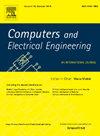High-performance and non-contact energy harvesters from high-voltage power lines magnetic fields
IF 4
3区 计算机科学
Q1 COMPUTER SCIENCE, HARDWARE & ARCHITECTURE
引用次数: 0
Abstract
In this paper, high-performance and non-contact energy harvesters from the magnetic fields of high-voltage power lines are presented. The energy harvesters are based on a rod ferrite core in the middle of the coil and two -shaped ferrite cores at both ends of the rod ferrite core. The use of two -shaped ferrite cores can provide several times improvement in power. Exposing these cores to magnetic flux increases the magnetic flux guiding efficiency and increases the energy harvesting rate. Here, by connecting a voltage rectifier circuit, we design a portable power supply based on energy harvesting from magnetic fields, which can provide the power consumption needs of some low-power circuits. The results of the capacitor charging ability, the open-circuit voltage across the harvesters, and the output power are measured to evaluate the performance of the proposed structures. The results show that the structures exhibit acceptable performance for practical requirements. Based on the results, a maximum open-circuit voltage of 13.619 V and an output power of 4.449 mW under a magnetic field of 7 T are achieved for the best proposed structure. Considering that the proposed energy harvesting structures are non-contact and low-cost, therefore, they can be used to provide power for some low-power wireless monitoring sensors in high-voltage power transmission systems.
高性能和非接触式能量采集器从高压电力线磁场
本文介绍了一种高性能、非接触式高压电力线磁场能量采集器。能量采集器基于线圈中部的棒铁氧体铁芯和棒铁氧体铁芯两端的两个方形铁氧体铁芯。使用两个方形铁氧体铁心可以提供数倍的功率改进。将这些磁芯暴露在磁通量中可以提高磁通量引导效率并提高能量收集率。在这里,我们通过连接电压整流电路,设计了一种基于磁场能量收集的便携式电源,可以满足一些低功耗电路的功耗需求。通过测量电容器的充电能力、收割机上的开路电压和输出功率来评估所提出结构的性能。结果表明,该结构的性能可以满足实际要求。结果表明,该结构在7 μT磁场下的最大开路电压为13.619 V,输出功率为4.449 mW。考虑到所提出的能量收集结构具有非接触式和低成本的特点,因此,它们可以用于为高压输电系统中的一些低功耗无线监测传感器提供电力。
本文章由计算机程序翻译,如有差异,请以英文原文为准。
求助全文
约1分钟内获得全文
求助全文
来源期刊

Computers & Electrical Engineering
工程技术-工程:电子与电气
CiteScore
9.20
自引率
7.00%
发文量
661
审稿时长
47 days
期刊介绍:
The impact of computers has nowhere been more revolutionary than in electrical engineering. The design, analysis, and operation of electrical and electronic systems are now dominated by computers, a transformation that has been motivated by the natural ease of interface between computers and electrical systems, and the promise of spectacular improvements in speed and efficiency.
Published since 1973, Computers & Electrical Engineering provides rapid publication of topical research into the integration of computer technology and computational techniques with electrical and electronic systems. The journal publishes papers featuring novel implementations of computers and computational techniques in areas like signal and image processing, high-performance computing, parallel processing, and communications. Special attention will be paid to papers describing innovative architectures, algorithms, and software tools.
 求助内容:
求助内容: 应助结果提醒方式:
应助结果提醒方式:


